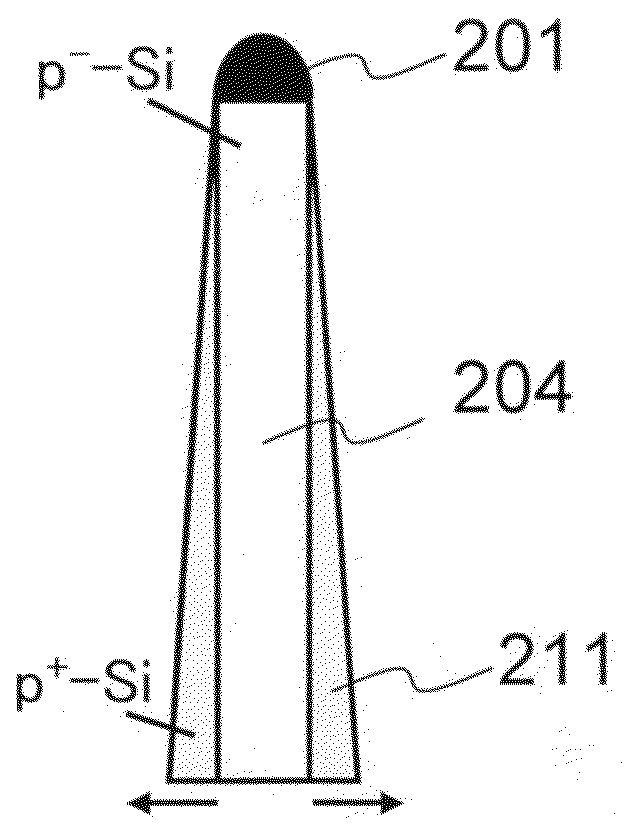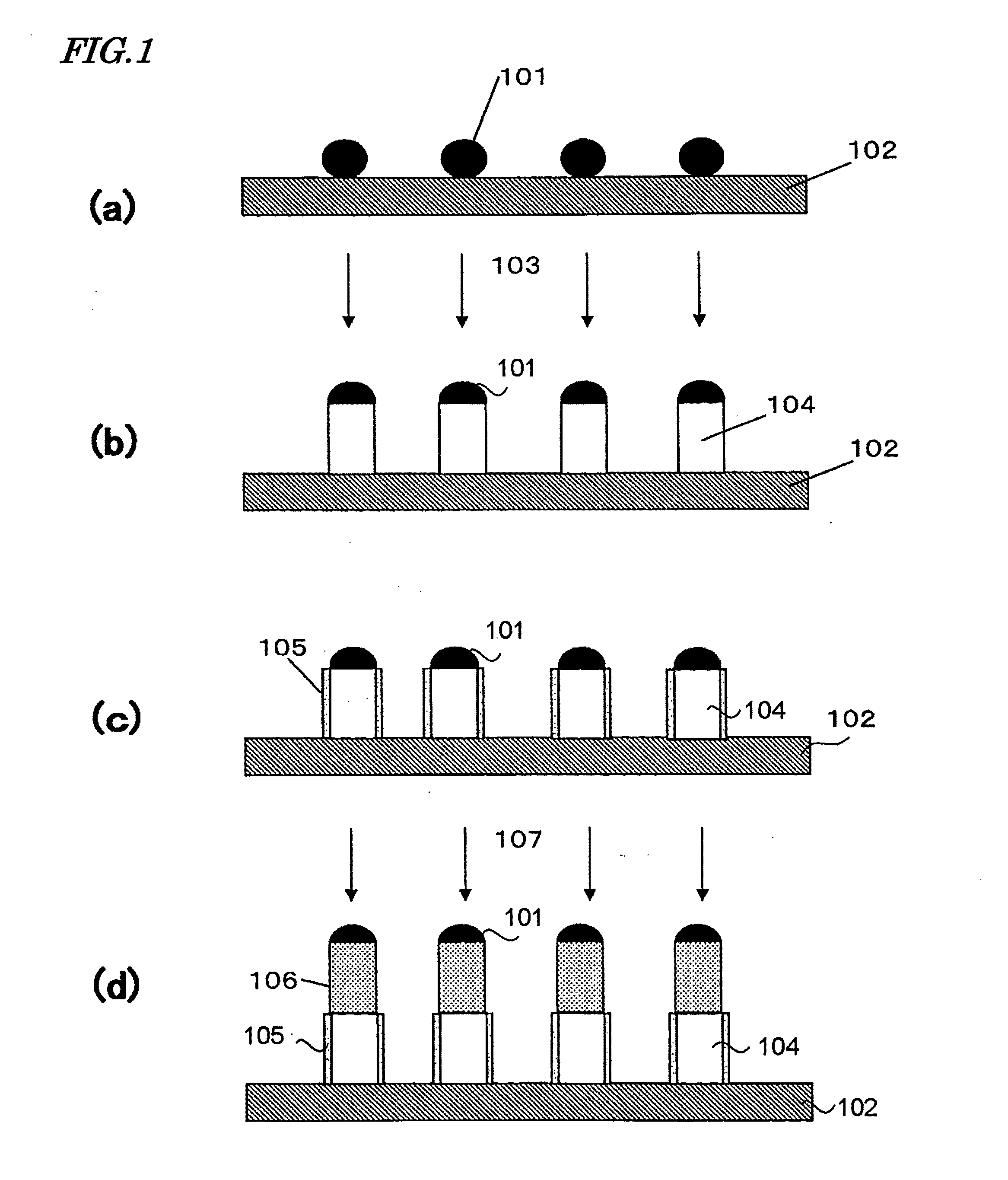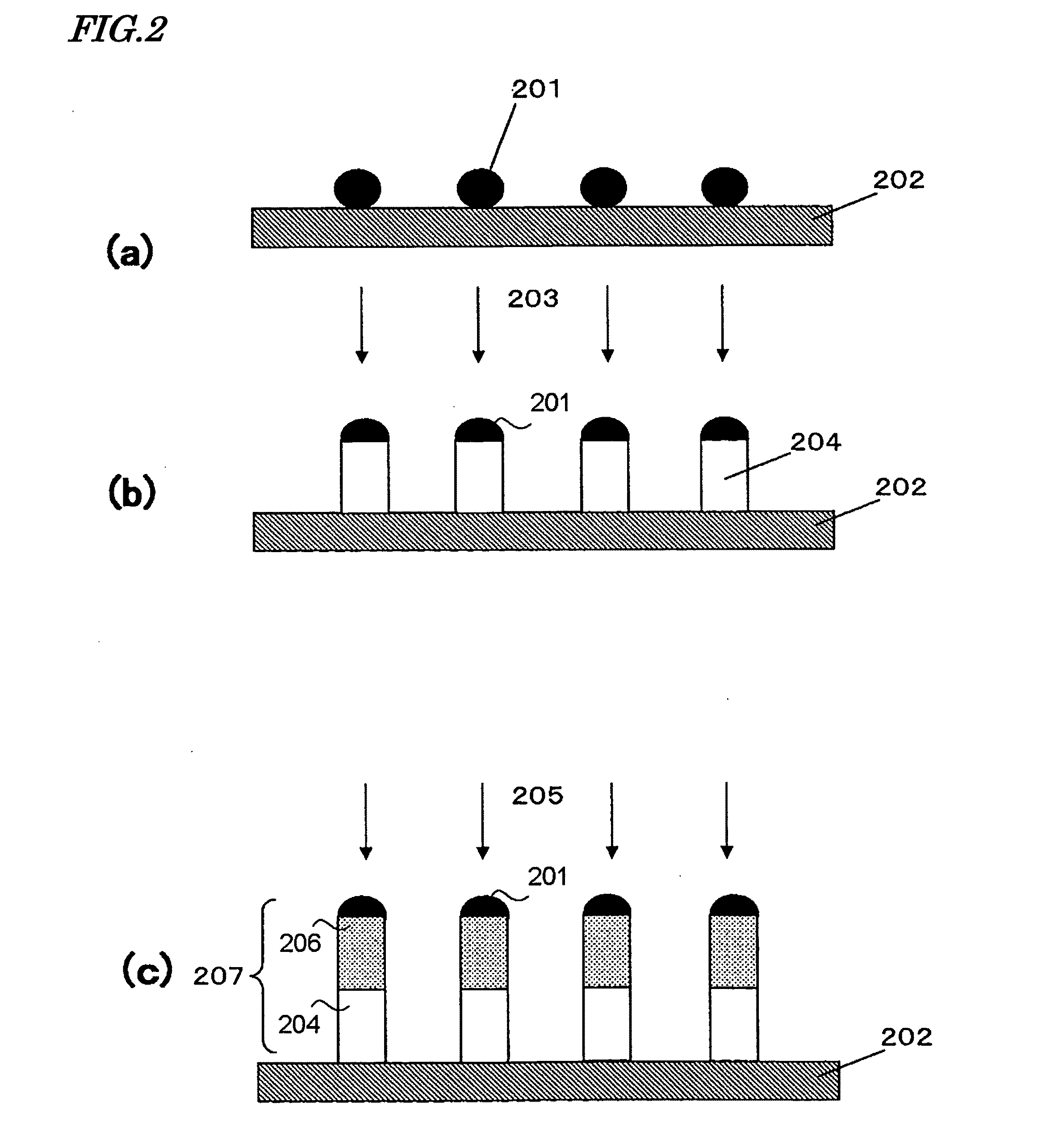Semiconductor nanowire and its manufacturing method
- Summary
- Abstract
- Description
- Claims
- Application Information
AI Technical Summary
Benefits of technology
Problems solved by technology
Method used
Image
Examples
embodiment 1
[0067]A first specific preferred embodiment of a semiconductor nanowire manufacturing process according to the present invention will be described with reference to FIGS. 2(a) through 3(c). In this preferred embodiment, Si nanowires that have been doped to have a p-i-p structure are formed.
[0068]First, as shown in FIG. 2(a), a silicon substrate 202 is provided as a growth substrate and catalyst particles 201 of gold (Au) are put on the silicon substrate 202. The silicon substrate 202 just needs to have thermal resistance that is high enough to withstand the heat treatment temperature on the nanowires growing. That is why a silicon dioxide film or a silicon nitride film may have been deposited on the silicon substrate 202. The crystallographic plane orientation and resistivity of the silicon substrate 202 may be determined arbitrarily.
[0069]The Au particles 201 used as the catalyst particles have distinct ability to promote the decomposition of the source gas and are used to produce ...
embodiment 2
[0094]Hereinafter, a second preferred embodiment of a method for fabricating a semiconductor nanowire according to the present invention will be described with reference to FIGS. 11(a) through 11(d). In this preferred embodiment, nanowires with a heterostructure of GaAs and GaAsP (which will be referred to herein as “GaAs / GaAsP nanowires”) are formed. These nanowires can be grown by VLS growth mechanism, which is a known method.
[0095]First, as shown in FIG. 11(a), Au particles 301 are put on an arbitrary substrate 302 by the method described above, for example.
[0096]Next, the substrate 302 with these Au particles 301 is loaded into the chamber of a CVD system, for example. Then, as shown in FIG. 11(b), a source gas 303, including a constituent element of GaAs nanowires, is introduced into the chamber and maintained at a predetermined pressure. And the substrate 302 is heated by a lamp or a heater, for example, and maintained at an arbitrary temperature, thereby growing GaAs nanowire...
embodiment 3
[0102]Hereinafter, a semiconductor device will be described as a third specific preferred embodiment of the present invention. The semiconductor device of this preferred embodiment is a transistor including the Si nanowires of the first preferred embodiment (which will be referred to herein as “profile Si nanowires”).
[0103]FIG. 12 is a perspective view illustrating a transistor including the profile Si nanowires (which will be referred to herein as a “nanowire transistor”) as a third preferred embodiment of the present invention. FIG. 13(a) is a top view of the nanowire transistor shown in FIG. 12 and FIG. 13(b) is a cross-sectional view as viewed on the plane C-C shown in FIG. 13(a).
[0104]In each of the profile Si nanowires 406 of this preferred embodiment, the p-type doped regions 407 are doped with a Group III element such as B at a dose of approximately 1×1018 atoms / cm3 to approximately 1×1020 atoms / cm3, while the non-doped region 408 includes a Group III element such as B in a ...
PUM
 Login to View More
Login to View More Abstract
Description
Claims
Application Information
 Login to View More
Login to View More - R&D
- Intellectual Property
- Life Sciences
- Materials
- Tech Scout
- Unparalleled Data Quality
- Higher Quality Content
- 60% Fewer Hallucinations
Browse by: Latest US Patents, China's latest patents, Technical Efficacy Thesaurus, Application Domain, Technology Topic, Popular Technical Reports.
© 2025 PatSnap. All rights reserved.Legal|Privacy policy|Modern Slavery Act Transparency Statement|Sitemap|About US| Contact US: help@patsnap.com



